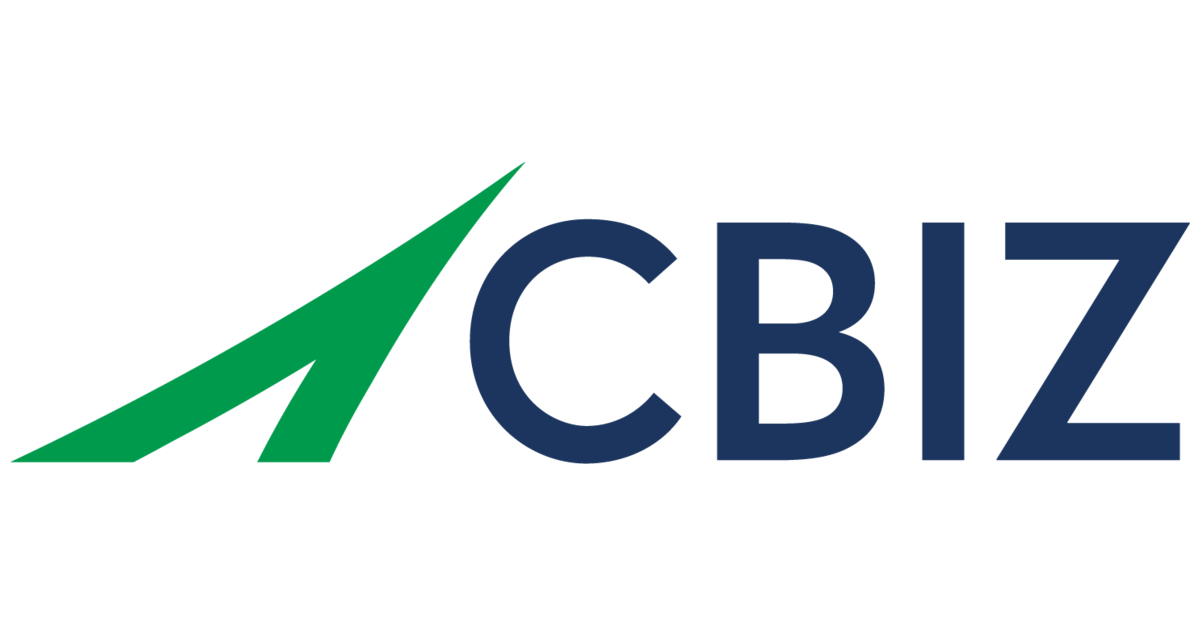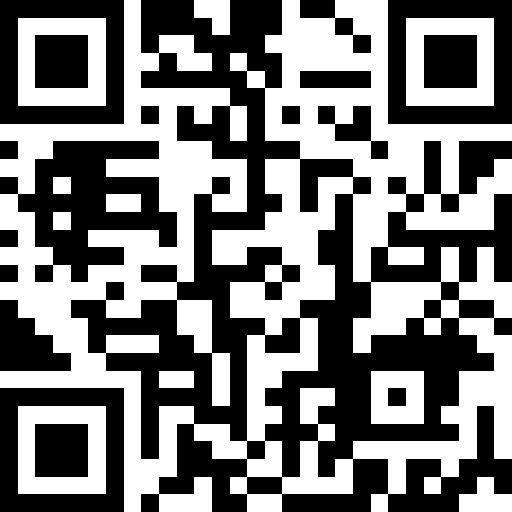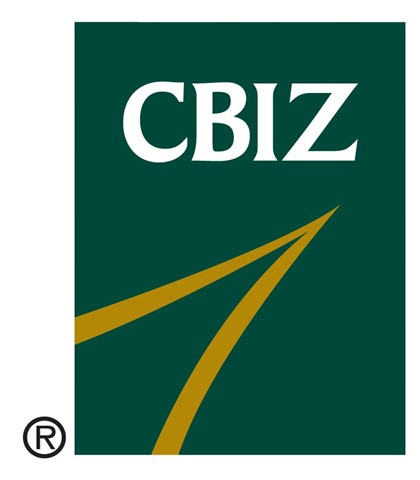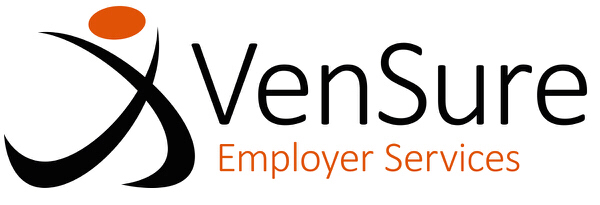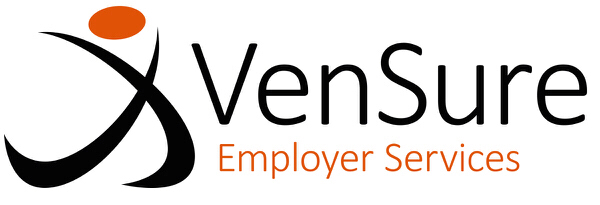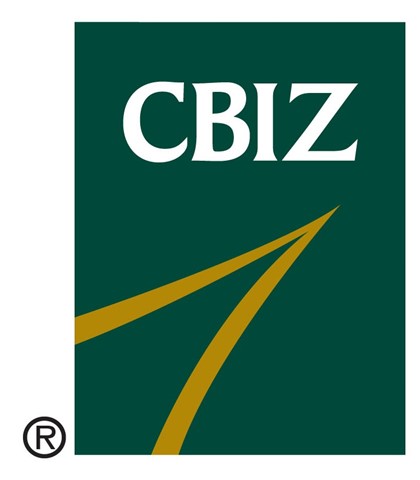Title Page
-
Client
-
Conducted on
-
Prepared by
-
Location
-
This report is in follow-up to the safety survey completed on the above date. The purpose of the survey was to identify potential safety hazards and/or violations.
Attached, is a list of safety observations and recommendations based on conditions present at the time of my visit. If you have any questions or require additional information after reading this report, please don't hesitate to contact me.
Report Summary
- OSHA 1910 Finding
-
Finding Type
-
Issue Identified
-
Recommendation:
The employer shall provide training to employees at least annually and when changes in job assignment will expose them to new hazards. Current employees, and new employees prior to starting work, shall be trained in at least the following.
https://www.osha.gov/laws-regs/regulations/standardnumber/1910/1910.272 -
Recommendation:
Types of guarding. One or more methods of machine guarding shall be provided to protect the operator and other employees in the machine area from hazards such as those created by point of operation, ingoing nip points, rotating parts, flying chips and sparks. Examples of guarding methods are - barrier guards, two-hand tripping devices, electronic safety devices, etc.
https://www.osha.gov/laws-regs/regulations/standardnumber/1910/1910.212 -
Recommendation:
Each employer shall ensure that a copy of the Exposure Control Plan is accessible to employees in accordance with 29 CFR 1910.20(e).
https://www.osha.gov/laws-regs/regulations/standardnumber/1910/1910.1030 -
Recommendation:
Annual training for all employees shall be provided within one year of their previous training.
https://www.osha.gov/laws-regs/regulations/standardnumber/1910/1910.1030 -
Recommendation:
Hepatitis B vaccination shall be made available after the employee has received the training required in paragraph (g)(2)(vii)(I) and within 10 working days of initial assignment to all employees who have occupational exposure unless the employee has previously received the complete hepatitis B vaccination series, antibody testing has revealed that the employee is immune, or the vaccine is contraindicated for medical reasons.
https://www.osha.gov/laws-regs/regulations/standardnumber/1910/1910.1030 -
Recommendation:
Engineering and work practice controls shall be used to eliminate or minimize employee exposure. Where occupational exposure remains after institution of these controls, personal protective equipment shall also be used.
https://www.osha.gov/laws-regs/regulations/standardnumber/1910/1910.1030 -
Recommendation:
Each employer having an employee(s) with occupational exposure as defined by paragraph (b) of this section shall establish a written Exposure Control Plan designed to eliminate or minimize employee exposure.
https://www.osha.gov/laws-regs/regulations/standardnumber/1910/1910.1030 -
Recommendation:
The employer shall make available the hepatitis B vaccine and vaccination series to all employees who have occupational exposure, and post-exposure evaluation and follow-up to all employees who have had an exposure incident at no cost to the employee.
https://www.osha.gov/laws-regs/regulations/standardnumber/1910/1910.1030 -
Recommendation:
Employers shall provide additional training when changes such as modification of tasks or procedures or institution of new tasks or procedures affect the employee's occupational exposure. The additional training may be limited to addressing the new exposures created.
https://www.osha.gov/laws-regs/regulations/standardnumber/1910/1910.1030 -
Recommendation:
The employer shall repair or replace personal protective equipment as needed to maintain its effectiveness, at no cost to the employee.
https://www.osha.gov/laws-regs/regulations/standardnumber/1910/1910.1030 -
Recommendation:
The Exposure Control Plan shall be reviewed and updated at least annually and whenever necessary to reflect new or modified tasks and procedures which affect occupational exposure and to reflect new or revised employee positions with occupational exposure.
https://www.osha.gov/laws-regs/regulations/standardnumber/1910/1910.1030 -
Recommendation:
The employer shall establish and maintain a sharps injury log for the recording of percutaneous injuries from contaminated sharps. The information in the sharps injury log shall be recorded and maintained in such manner as to protect the confidentiality of the injured employee
https://www.osha.gov/laws-regs/regulations/standardnumber/1910/1910.1030 -
Recommendation:
Training records shall be maintained for 3 years from the date on which the training occurred.
https://www.osha.gov/laws-regs/regulations/standardnumber/1910/1910.1030 -
Recommendation:
Warning labels shall be affixed to containers of regulated waste, refrigerators and freezers containing blood or other potentially infectious material; and other containers used to store, transport or ship blood or other potentially infectious materials
https://www.osha.gov/laws-regs/regulations/standardnumber/1910/1910.1030 -
Recommendation:
Fountains. All electric equipment, including power supply cords, operating at more than 15 volts and used with fountains shall be protected by ground-fault circuit interrupters.
https://www.osha.gov/laws-regs/regulations/standardnumber/1910/1910.306 -
Recommendation:
Listed or labeled equipment shall be installed and used in accordance with any instructions included in the listing or labeling.
https://www.osha.gov/laws-regs/regulations/standardnumber/1910/1910.303 -
Recommendation:
Each employee shall comply with occupational safety and health standards and all rules, regulations, and orders issued pursuant to this Act which are applicable to his own actions and conduct.
https://www.osha.gov/laws-regs/oshact/section5-duties -
Recommendation:
Each employer - shall furnish to each of his employees employment and a place of employment which are free from recognized hazards that are causing or are likely to cause death or serious physical harm to his employees;
https://www.osha.gov/laws-regs/oshact/section5-duties -
Recommendation:
Each employer - shall comply with occupational safety and health standards promulgated under this Act.
https://www.osha.gov/laws-regs/oshact/section5-duties -
Recommendation:
Employers shall provide employees with effective information and training on hazardous chemicals in their work area at the time of their initial assignment, and whenever a new chemical hazard the employees have not previously been trained about is introduced into their work area. Information and training may be designed to cover categories of hazards (e.g., flammability, carcinogenicity) or specific chemicals. Chemical-specific information must always be available through labels and safety data sheets.
https://www.osha.gov/laws-regs/regulations/standardnumber/1910/1910.1200 -
Recommendation:
Workplace labeling. Except as provided in paragraphs (f)(7) and (f)(8) of this section, the employer shall ensure that each container of hazardous chemicals in the workplace is labeled, tagged or marked with either:
https://www.osha.gov/laws-regs/regulations/standardnumber/1910/1910.1200 -
Recommendation:
The employer shall maintain in the workplace copies of the required safety data sheets for each hazardous chemical, and shall ensure that they are readily accessible during each work shift to employees when they are in their work area(s). (Electronic access and other alternatives to maintaining paper copies of the safety data sheets are permitted as long as no barriers to immediate employee access in each workplace are created by such options.)
https://www.osha.gov/laws-regs/regulations/standardnumber/1910/1910.1200 -
Recommendation:
Employers shall develop, implement, and maintain at each workplace, a written hazard communication program which at least describes how the criteria specified in paragraphs (f), (g), and (h) of this section for labels and other forms of warning, safety data sheets, and employee information and training will be met, and which also includes the following:
https://www.osha.gov/laws-regs/regulations/standardnumber/1910/1910.1200 -
Recommendation:
Electric equipment may not be used unless the following markings have been placed on the equipment - (Manufacturer's name, trademark, or other descriptive marking by which the organization is responsible for the product or other markings giving voltage, current, wattage, or other ratings.
https://www.osha.gov/laws-regs/regulations/standardnumber/1910/1910.303 -
Recommendation:
The point of operation of machines whose operation exposes an employee to injury, shall be guarded. The guarding device shall be in conformity with any appropriate standards therefor, or, in the absence of applicable specific standards, shall be so designed and constructed as to prevent the operator from having any part of his body in the danger zone during the operating cycle.
https://www.osha.gov/laws-regs/regulations/standardnumber/1910/1910.212 -
Recommendation:
The employer shall report, within 30 days of the occurrence, all point-of-operation injuries to operators or other employees to either the Director of the Directorate of Standards and Guidance at OSHA, U.S. Department of Labor, Washington, DC 20210 or electronically at http://www.osha.gov/pls/oshaweb/mechanical.html; or to the State Agency administering a plan approved by the Assistant Secretary of Labor for Occupational Safety and Health.
https://www.osha.gov/laws-regs/regulations/standardnumber/1910/1910.217 -
Recommendation:
Special handtools for placing and removing material shall be such as to permit easy handling of material without the operator placing a hand in the danger zone. Such tools shall not be in lieu of other guarding required by this section, but can only be used to supplement protection provided.
https://www.osha.gov/laws-regs/regulations/standardnumber/1910/1910.212 -
Recommendation:
At least annually after obtaining the baseline audiogram, the employer shall obtain a new audiogram for each employee exposed at or above an 8-hour time-weighted average of 85 decibels.
https://www.osha.gov/laws-regs/regulations/standardnumber/1910/1910.95 -
Recommendation:
Within 6 months of an employee's first exposure at or above the action level, the employer shall establish a valid baseline audiogram against which subsequent audiograms can be compared.
https://www.osha.gov/laws-regs/regulations/standardnumber/1910/1910.95 -
Recommendation:
The employer shall administer a continuing, effective hearing conservation program, as described in paragraphs (c) through (o) of this section, whenever employee noise exposures equal or exceed an 8-hour time-weighted average sound level (TWA) of 85 decibels measured on the A scale (slow response) or, equivalently, a dose of fifty percent. For purposes of the hearing conservation program, employee noise exposures shall be computed in accordance with appendix A and Table G-16a, and without regard to any attenuation provided by the use of personal protective equipment.
https://www.osha.gov/laws-regs/regulations/standardnumber/1910/1910.95 -
Recommendation:
Employers shall make hearing protectors available to all employees exposed to an 8-hour time-weighted average of 85 decibels or greater at no cost to the employees. Hearing protectors shall be replaced as necessary.
https://www.osha.gov/laws-regs/regulations/standardnumber/1910/1910.95 -
Recommendation:
When information indicates that any employee's exposure may equal or exceed an 8-hour time-weighted average of 85 decibels, the employer shall develop and implement a monitoring program.
https://www.osha.gov/laws-regs/regulations/standardnumber/1910/1910.95 -
Recommendation:
The program shall be provided at no cost to employees.
https://www.osha.gov/laws-regs/regulations/standardnumber/1910/1910.95 -
Recommendation:
Protective equipment, including personal protective equipment for eyes, face, head, and extremities, protective clothing, respiratory devices, and protective shields and barriers, shall be provided, used, and maintained in a sanitary and reliable condition wherever it is necessary by reason of hazards of processes or environment, chemical hazards, radiological hazards, or mechanical irritants encountered in a manner capable of causing injury or impairment in the function of any part of the body through absorption, inhalation or physical contact.
https://www.osha.gov/laws-regs/regulations/standardnumber/1910/1910.132 -
Recommendation:
Defective or damaged personal protective equipment shall not be used.
https://www.osha.gov/laws-regs/regulations/standardnumber/1910/1910.132 -
Recommendation:
Where employees provide their own protective equipment, the employer shall be responsible to assure its adequacy, including proper maintenance, and sanitation of such equipment.
https://www.osha.gov/laws-regs/regulations/standardnumber/1910/1910.132 -
Recommendation:
This standard requires employers to assess their workplaces for hazards that might require the use of personal protective equipment and to provide such equipment to employees.
https://www.osha.gov/laws-regs/regulations/standardnumber/1910/1910.132 -
Recommendation:
Except as provided by paragraphs (h)(2) through (h)(6) of this section, the protective equipment, including personal protective equipment (PPE), used to comply with this part, shall be provided by the employer at no cost to employees.
https://www.osha.gov/laws-regs/regulations/standardnumber/1910/1910.132 -
Recommendation:
Each affected employee shall demonstrate an understanding of the training specified in paragraph (f)(1) of this section, and the ability to use PPE properly, before being allowed to perform work requiring the use of PPE.
https://www.osha.gov/laws-regs/regulations/standardnumber/1910/1910.132 -
Recommendation:
When the employer has reason to believe that any affected employee who has already been trained does not have the understanding and skill required by paragraph (f)(2) of this section, the employer shall retrain each such employee. Circumstances where retraining is required include, but are not limited to, situations where: Changes in the types of PPE to be used render previous training obsolete
https://www.osha.gov/laws-regs/regulations/standardnumber/1910/1910.132 -
Recommendation:
The employer shall provide training to each employee who is required by this section to use PPE. Each such employee shall be trained to know at least the following: How to properly don, doff, adjust, and wear PPE
https://www.osha.gov/laws-regs/regulations/standardnumber/1910/1910.132 -
Recommendation:
When the employer has reason to believe that any affected employee who has already been trained does not have the understanding and skill required by paragraph (f)(2) of this section, the employer shall retrain each such employee. Circumstances where retraining is required include, but are not limited to, situations where: Inadequacies in an affected employee's knowledge or use of assigned PPE indicate that the employee has not retained the requisite understanding or skill.
https://www.osha.gov/laws-regs/regulations/standardnumber/1910/1910.132 -
Recommendation:
The employer shall provide training to each employee who is required by this section to use PPE. Each such employee shall be trained to know at least the following: The limitations of the PPE
https://www.osha.gov/laws-regs/regulations/standardnumber/1910/1910.132 -
Recommendation:
The employer shall provide training to each employee who is required by this section to use PPE. Each such employee shall be trained to know at least the following: The proper care, maintenance, useful life and disposal of the PPE
https://www.osha.gov/laws-regs/regulations/standardnumber/1910/1910.132 -
Recommendation:
When the employer has reason to believe that any affected employee who has already been trained does not have the understanding and skill required by paragraph (f)(2) of this section, the employer shall retrain each such employee. Circumstances where retraining is required include, but are not limited to, situations where:
https://www.osha.gov/laws-regs/regulations/standardnumber/1910/1910.132 -
Recommendation:
When the employer has reason to believe that any affected employee who has already been trained does not have the understanding and skill required by paragraph (f)(2) of this section, the employer shall retrain each such employee. Circumstances where retraining is required include, but are not limited to, situations where: Changes in the workplace render previous training obsolete
https://www.osha.gov/laws-regs/regulations/standardnumber/1910/1910.132 -
Recommendation:
The employer shall provide training to each employee who is required by this section to use PPE. Each such employee shall be trained to know at least the following: What PPE is necessary;
https://www.osha.gov/laws-regs/regulations/standardnumber/1910/1910.132 -
Recommendation:
The employer shall provide training to each employee who is required by this section to use PPE. Each such employee shall be trained to know at least the following: When PPE is necessary;
https://www.osha.gov/laws-regs/regulations/standardnumber/1910/1910.132 -
Recommendation:
The employer shall provide training to each employee who is required by this section to use PPE. Each such employee shall be trained to know at least the following:
https://www.osha.gov/laws-regs/regulations/standardnumber/1910/1910.132 -
Recommendation:
The employer shall demarcate regulated areas from the rest of the workplace in a manner that minimizes the number of employees exposed to respirable crystalline silica within the regulated area.
https://www.osha.gov/laws-regs/regulations/standardnumber/1910/1910.1053 -
Recommendation:
The employer shall ensure that each employee covered by this section can demonstrate knowledge and understanding of at least the following: health hazards associated with exposure to respirable crystalline silica; Specific Tasks the could lead to exposures, Specific measure implemented to protect employees from exposures including engineering, work practice and respirators and purpose of medical surveillance program.
https://www.osha.gov/laws-regs/regulations/standardnumber/1910/1910.1053 -
Recommendation:
The employer shall use engineering and work practice controls to reduce and maintain employee exposure to respirable crystalline silica to or below the PEL, unless the employer can demonstrate that such controls are not feasible. Wherever such feasible engineering and work practice controls are not sufficient to reduce employee exposure to or below the PEL, the employer shall nonetheless use them to reduce employee exposure to the lowest feasible level and shall supplement them with the use of respiratory protection that complies with the requirements of paragraph (g) of this section.
https://www.osha.gov/laws-regs/regulations/standardnumber/1910/1910.1053 -
Recommendation:
The employer shall assess the exposure of each employee who is or may reasonably be expected to be exposed to respirable crystalline silica at or above the action level in accordance with either the performance option in paragraph (d)(2) or the scheduled monitoring option in paragraph (d)(3) of this section.
https://www.osha.gov/laws-regs/regulations/standardnumber/1910/1910.1053 -
Recommendation:
The employer shall include respirable crystalline silica in the program established to comply with the hazard communication standard (HCS) (29 CFR 1910.1200). The employer shall ensure that each employee has access to labels on containers of crystalline silica and safety data sheets, and is trained in accordance with the provisions of HCS and paragraph (j)(3) of this section. The employer shall ensure that at least the following hazards are addressed: Cancer, lung effects, immune system effects, and kidney effects.
https://www.osha.gov/laws-regs/regulations/standardnumber/1910/1910.1053 -
Recommendation:
The employer shall post signs at all entrances to regulated areas that bear the following legend: DANGER; RESPIRABLE CRYSTALLINE SILICA; MAY CAUSE CANCER; CAUSES DAMAGE TO LUNGS; WEAR RESPIRATORY PROTECTION IN THIS AREA; AUTHORIZED PERSONNEL ONLY
https://www.osha.gov/laws-regs/regulations/standardnumber/1910/1910.1053 -
Recommendation:
The employer shall not allow compressed air to be used to clean clothing or surfaces where such activity could contribute to employee exposure to respirable crystalline silica unless: used in conjunction with a ventilation system that effectively captures the dust cloud created by the compressed air; or No alternative method is feasible.
https://www.osha.gov/laws-regs/regulations/standardnumber/1910/1910.1053 -
Recommendation:
The employer shall not allow dry sweeping or dry brushing where such activity could contribute to employee exposure to respirable crystalline silica unless wet sweeping, HEPA-filtered vacuuming or other methods that minimize the likelihood of exposure are not feasible.https://www.osha.gov/laws-regs/regulations/standardnumber/1910/1910.1053 -
Recommendation:
The employer shall make medical surveillance available at no cost to the employee, and at a reasonable time and place, for each employee who will be occupationally exposed to respirable crystalline silica at or above the action level for 30 or more days per year.
https://www.osha.gov/laws-regs/regulations/standardnumber/1910/1910.1053 -
Recommendation:
The employer shall make available an initial (baseline) medical examination within 30 days after initial assignment, unless the employee has received a medical examination that meets the requirements of this section within the last three years.
https://www.osha.gov/laws-regs/regulations/standardnumber/1910/1910.1053 -
Recommendation:
The employer shall make available medical examinations that include the procedures described in paragraph (i)(2) of this section (except paragraph (i)(2)(v)) at least every three years, or more frequently if recommended by the PLHCP.
https://www.osha.gov/laws-regs/regulations/standardnumber/1910/1910.1053 -
Recommendation:
The employer shall ensure that no employee is exposed to an airborne concentration of respirable crystalline silica in excess of 50 μg/m3, calculated as an 8-hour TWA.
https://www.osha.gov/laws-regs/regulations/standardnumber/1910/1910.1053 -
Recommendation:
The employer shall provide each employee and the employee's designated representative entering a regulated area with an appropriate respirator in accordance with paragraph (g) of this section and shall require each employee and the employee's designated representative to use the respirator while in a regulated area.
https://www.osha.gov/laws-regs/regulations/standardnumber/1910/1910.1053 -
Recommendation:
The employer shall review and evaluate the effectiveness of the written exposure control plan at least annually and update it as necessary.
https://www.osha.gov/laws-regs/regulations/standardnumber/1910/1910.1053 -
Recommendation:
The medical questionnaire and examinations shall be administered confidentially during the employee's normal working hours or at a time and place convenient to the employee. The medical questionnaire shall be administered in a manner that ensures that the employee understands its content.
https://www.osha.gov/laws-regs/regulations/standardnumber/1910/1910.134 -
Recommendation:
The employer shall ensure that an employee using a tight-fitting facepiece respirator is fit tested prior to initial use of the respirator, whenever a different respirator facepiece (size, style, model or make) is used, and at least annually thereafter.
https://www.osha.gov/laws-regs/regulations/standardnumber/1910/1910.135 -
Recommendation:
The employer shall ensure that employees using a tight-fitting facepiece respirator pass an appropriate qualitative fit test (QLFT) or quantitative fit test (QNFT) as stated in this paragraph.
https://www.osha.gov/laws-regs/regulations/standardnumber/1910/1910.136 -
Recommendation:
The employer shall identify a physician or other licensed health care professional (PLHCP) to perform medical evaluations using a medical questionnaire or an initial medical examination that obtains the same information as the medical questionnaire.
https://www.osha.gov/laws-regs/regulations/standardnumber/1910/1910.137 -
Recommendation:
The employer shall designate a program administrator who is qualified by appropriate training or experience that is commensurate with the complexity of the program to administer or oversee the respiratory protection program and conduct the required evaluations of program effectiveness.
https://www.osha.gov/laws-regs/regulations/standardnumber/1910/1910.138 -
Recommendation:
A respirator shall be provided to each employee when such equipment is necessary to protect the health of such employee. The employer shall provide the respirators which are applicable and suitable for the purpose intended. The employer shall be responsible for the establishment and maintenance of a respiratory protection program, which shall include the requirements outlined in paragraph (c) of this section. The program shall cover each employee required by this section to use a respirator.
https://www.osha.gov/laws-regs/regulations/standardnumber/1910/1910.139 -
Recommendation:
In any workplace where respirators are necessary to protect the health of the employee or whenever respirators are required by the employer, the employer shall establish and implement a written respiratory protection program with worksite-specific procedures. The program shall be updated as necessary to reflect those changes in workplace conditions that affect respirator use. The employer shall include in the program the following provisions of this section
https://www.osha.gov/laws-regs/regulations/standardnumber/1910/1910.140 -
Recommendation:
Acetylene cylinders shall be stored valve end up.
https://www.osha.gov/laws-regs/regulations/standardnumber/1910/1910.253 -
Recommendation:
Cylinders shall be kept far enough away from the actual welding or cutting operation so that sparks, hot slag, or flame will not reach them, or fire-resistant shields shall be provided.
https://www.osha.gov/laws-regs/regulations/standardnumber/1910/1910.254 -
Recommendation:
Valves of empty cylinders shall be closed.
https://www.osha.gov/laws-regs/regulations/standardnumber/1910/1910.255 -
Recommendation:
Cylinder valves shall be closed when work is finished.
https://www.osha.gov/laws-regs/regulations/standardnumber/1910/1910.256 -
Recommendation:
Inside of buildings, cylinders shall be stored in a well-protected, well-ventilated, dry location, at least 20 feet (6.1 m) from highly combustible materials such as oil or excelsior. Cylinders should be stored in definitely assigned places away from elevators, stairs, or gangways. Assigned storage spaces shall be located where cylinders will not be knocked over or damaged by passing or falling objects, or subject to tampering by unauthorized persons. Cylinders shall not be kept in unventilated enclosures such as lockers and cupboards.
https://www.osha.gov/laws-regs/regulations/standardnumber/1910/1910.257 -
Recommendation:
Oxygen cylinders shall not be stored near highly combustible material, especially oil and grease; or near reserve stocks of carbide and acetylene or other fuel-gas cylinders, or near any other substance likely to cause or accelerate fire; or in an acetylene generator compartment.
https://www.osha.gov/laws-regs/regulations/standardnumber/1910/1910.258 -
Recommendation:
Cylinders shall be kept away from radiators and other sources of heat.
https://www.osha.gov/laws-regs/regulations/standardnumber/1910/1910.259 -
Recommendation:
Oxygen cylinders in storage shall be separated from fuel-gas cylinders or combustible materials (especially oil or grease), a minimum distance of 20 feet (6.1 m) or by a noncombustible barrier at least 5 feet (1.5 m) high having a fire-resistance rating of at least one-half hour.
https://www.osha.gov/laws-regs/regulations/standardnumber/1910/1910.260 -
Recommendation:
Valve protection caps, where cylinder is designed to accept a cap, shall always be in place, hand-tight, except when cylinders are in use or connected for use.
https://www.osha.gov/laws-regs/regulations/standardnumber/1910/1910.261 -
Recommendation:
When acetylene cylinders are coupled, approved flash arresters shall be installed between each cylinder and the coupler block. For outdoor use only, and when the number of cylinders coupled does not exceed three, one flash arrester installed between the coupler block and regulator is acceptable.
https://www.osha.gov/laws-regs/regulations/standardnumber/1910/1910.262 -
Recommendation:
Suitable fire extinguishing equipment shall be maintained in a state of readiness for instant use. Such equipment may consist of pails of water, buckets of sand, hose or portable extinguishers depending upon the nature and quantity of the combustible material exposed.
https://www.osha.gov/laws-regs/regulations/standardnumber/1910/1910.252 -
Recommendation:
If the object to be welded or cut cannot readily be moved, all movable fire hazards in the vicinity shall be taken to a safe place.
https://www.osha.gov/laws-regs/regulations/standardnumber/1910/1910.252 -
Recommendation:
If the object to be welded or cut cannot be moved and if all the fire hazards cannot be removed, then guards shall be used to confine the heat, sparks, and slag, and to protect the immovable fire hazards.
https://www.osha.gov/laws-regs/regulations/standardnumber/1910/1910.252 -
Positive Finding
OSHA 1926 Finding
-
Finding Type
-
Issue Identified
-
Recommendation:
The employer shall use either ground fault circuit interrupters as specified or an assured equipment grounding conductor program as specified to protect employees on construction sites.
https://www.osha.gov/laws-regs/regulations/standardnumber/1926/1926.404 -
Recommendation:
The employer shall determine if the walking/working surfaces on which its employees are to work have the strength and structural integrity to support employees safely. Employees shall be allowed to work on those surfaces only when the surfaces have the requisite strength and structural integrity.
https://www.osha.gov/laws-regs/regulations/standardnumber/1926/1926.501 -
Recommendation:
Unprotected sides and edges. Each employee on a walking/working surface (horizontal and vertical surface) with an unprotected side or edge which is 6 feet (1.8 m) or more above a lower level shall be protected from falling by the use of guardrail systems, safety net systems, or personal fall arrest systems.
https://www.osha.gov/laws-regs/regulations/standardnumber/1926/1926.501 -
Recommendation:
Each employee on walking/working surfaces shall be protected from falling through holes (including skylights) more than 6 feet (1.8 m) above lower levels, by personal fall arrest systems, covers, or guardrail systems erected around such holes.
https://www.osha.gov/laws-regs/regulations/standardnumber/1926/1926.501 -
Recommendation:
Roofing work on Low-slope roofs. Except as otherwise provided in paragraph (b) of this section, each employee engaged in roofing activities on low-slope roofs, with unprotected sides and edges 6 feet (1.8 m) or more above lower levels shall be protected from falling by guardrail systems, safety net systems, personal fall arrest systems, or a combination of warning line system and guardrail system, warning line system and safety net system, or warning line system and personal fall arrest system, or warning line system and safety monitoring system. Or, on roofs 50-feet (15.25 m) or less in width (see Appendix A to subpart M of this part), the use of a safety monitoring system alone [i.e. without the warning line system] is permitted.
https://www.osha.gov/laws-regs/regulations/standardnumber/1926/1926.501 -
Recommendation:
Each employee on a steep roof with unprotected sides and edges 6 feet (1.8 m) or more above lower levels shall be protected from falling by guardrail systems with toeboards, safety net systems, or personal fall arrest systems.
https://www.osha.gov/laws-regs/regulations/standardnumber/1926/1926.501 -
Recommendation:
Each employee working on, at, above, or near wall openings (including those with chutes attached) where the outside bottom edge of the wall opening is 6 feet (1.8 m) or more above lower levels and the inside bottom edge of the wall opening is less than 39 inches (1.0 m) above the walking/working surface, shall be protected from falling by the use of a guardrail system, a safety net system, or a personal fall arrest system.
https://www.osha.gov/laws-regs/regulations/standardnumber/1926/1926.501 -
Recommendation:
Protection from falling objects. When an employee is exposed to falling objects, the employer shall have each employee wear a hard hat and shall implement one of the following measures:
https://www.osha.gov/laws-regs/regulations/standardnumber/1926/1926.501 -
Recommendation:
Erect toeboards, screens, or guardrail systems to prevent objects from falling from higher levels
https://www.osha.gov/laws-regs/regulations/standardnumber/1926/1926.501 -
Recommendation:
Each employee on a walking/working surface 6 feet (1.8 m) or more above a lower level where leading edges are under construction, but who is not engaged in the leading edge work, shall be protected from falling by a guardrail system, safety net system, or personal fall arrest system. If a guardrail system is chosen to provide the fall protection, and a controlled access zone has already been established for leading edge work, the control line may be used in lieu of a guardrail along the edge that parallels the leading edge.
https://www.osha.gov/laws-regs/regulations/standardnumber/1926/1926.501 -
Recommendation:
Each employee in a hoist area shall be protected from falling 6 feet (1.8 m) or more to lower levels by guardrail systems or personal fall arrest systems. If guardrail systems, [or chain, gate, or guardrail] or portions thereof, are removed to facilitate the hoisting operation (e.g., during landing of materials), and an employee must lean through the access opening or out over the edge of the access opening (to receive or guide equipment and materials, for example), that employee shall be protected from fall hazards by a personal fall arrest system.
https://www.osha.gov/laws-regs/regulations/standardnumber/1926/1926.501 -
Recommendation:
For each employee engaged in a task identified in (Table 1) the employer shall implement engineering controls, work practices & respiratory protection specific to the task. Use (Table 1) under 1926.1153 for specific requirement.
https://www.osha.gov/laws-regs/regulations/standardnumber/1926/1926.1153 -
Recommendation:
The employer shall establish and implement a written exposure control plan that contains at least the following elements: Description of Tasks that involve exposure; description of Engineering controls, work practices and Respiratory protection; housekeeping measures
https://www.osha.gov/laws-regs/regulations/standardnumber/1926/1926.1153 -
Recommendation:
Oxygen cylinders in storage shall be separated from fuel-gas cylinders or combustible materials (especially oil or grease), a minimum distance of 20 feet (6.1 m) or by a noncombustible barrier at least 5 feet (1.5 m) high having a fire-resistance rating of at least one-half hour.
https://www.osha.gov/laws-regs/regulations/stealardnumber/1926/1926.350 -
Recommendation:
Inside of buildings, cylinders shall be stored in a well-protected, well-ventilated, dry location, at least 20 feet (6.1 m) from highly combustible materials such as oil or excelsior. Cylinders should be stored in definitely assigned places away from elevators, stairs, or gangways. Assigned storage places shall be located where cylinders will not be knocked over or damaged by passing or falling objects, or subject to tampering by unauthorized persons. Cylinders shall not be kept in unventilated enclosures such as lockers and cupboards.
https://www.osha.gov/laws-regs/regulations/stealardnumber/1926/1926.350 -
Recommendation:
Cylinders shall be kept far enough away from the actual welding or cutting operation so that sparks, hot slag, or flame will not reach them. When this is impractical, fire resistant shields shall be provided.
https://www.osha.gov/laws-regs/regulations/stealardnumber/1926/1926.350 -
Recommendation:
Valve protection caps shall be in place and secured.
https://www.osha.gov/laws-regs/regulations/stealardnumber/1926/1926.350 -
Recommendation:
When work is finished, when cylinders are empty, or when cylinders are moved at any time, the cylinder valve shall be closed.
https://www.osha.gov/laws-regs/regulations/stealardnumber/1926/1926.350 -
Recommendation:
A suitable cylinder truck, chain, or other steadying device shall be used to keep cylinders from being knocked over while in use.
https://www.osha.gov/laws-regs/regulations/stealardnumber/1926/1926.350 -
Recommendation: <br><br>Oxygen cylinders and fittings shall be kept away from oil or grease. Cylinders, cylinder caps and valves, couplings, regulators, hose, and apparatus shall be kept free from oil or greasy substances and shall not be handled with oily hands or gloves. Oxygen shall not be directed at oily surfaces, greasy clothes, or within a fuel oil or other storage tank or vessel.<br><br>https://www.osha.gov/laws-regs/regulations/stealardnumber/1926/1926.350
-
Recommendation:
Torches in use shall be inspected at the beginning of each working shift for leaking shutoff valves, hose couplings, and tip connections. Defective torches shall not be used.
https://www.osha.gov/laws-regs/regulations/stealardnumber/1926/1926.350 -
Recommendation:
All hose in use, carrying acetylene, oxygen, natural or manufactured fuel gas, or any gas or substance which may ignite or enter into combustion, or be in any way harmful to employees, shall be inspected at the beginning of each working shift. Defective hose shall be removed from service.
https://www.osha.gov/laws-regs/regulations/stealardnumber/1926/1926.350 -
Recommendation:
Except as provided in paragraphs (a)(2), (a)(3), (a)(4), (a)(5) and (g) of this section, each scaffold and scaffold component shall be capable of supporting, without failure, its own weight and at least 4 times the maximum intended load applied or transmitted to it.
https://www.osha.gov/laws-regs/regulations/standardnumber/1926/1926.451 -
Recommendation:
Scaffolds and scaffold components shall not be loaded in excess of their maximum intended loads or rated capacities, whichever is less.
https://www.osha.gov/laws-regs/regulations/standardnumber/1926/1926.451 -
Recommendation:
Scaffolds and scaffold components shall be inspected for visible defects by a competent person before each work shift, and after any occurrence which could affect a scaffold's structural integrity.
https://www.osha.gov/laws-regs/regulations/standardnumber/1926/1926.451 -
Recommendation:
Any part of a scaffold damaged or weakened such that its strength is less than that required by paragraph (a) of this section shall be immediately repaired or replaced, braced to meet those provisions, or removed from service until repaired.
https://www.osha.gov/laws-regs/regulations/standardnumber/1926/1926.451 -
Recommendation:
Scaffolds shall be erected, moved, dismantled, or altered only under the supervision and direction of a competent person qualified in scaffold erection, moving, dismantling or alteration. Such activities shall be performed only by experienced and trained employees selected for such work by the competent person.
https://www.osha.gov/laws-regs/regulations/standardnumber/1926/1926.451 -
Recommendation:
Each employee on a scaffold more than 10 feet (3.1 m) above a lower level shall be protected from falling to that lower level.
https://www.osha.gov/laws-regs/regulations/standardnumber/1926/1926.451 -
Recommendation:
In addition to wearing hardhats each employee on a scaffold shall be provided with additional protection from falling hand tools, debris, and other small objects through the installation of toeboards, screens, or guardrail systems, or through the erection of debris nets, catch platforms, or canopy structures that contain or deflect the falling objects. When the falling objects are too large, heavy or massive to be contained or deflected by any of the above-listed measures, the employer shall place such potential falling objects away from the edge of the surface from which they could fall and shall secure those materials as necessary to prevent their falling.
https://www.osha.gov/laws-regs/regulations/standardnumber/1926/1926.451 -
Recommendation:
Flexible cords and cables shall be protected from damage. Sharp corners and projections shall be avoided. Flexible cords and cables may pass through doorways or other pinch points, if protection is provided to avoid damage.
https://www.osha.gov/laws-regs/regulations/standardnumber/1926/1926.405 -
Recommendation:
Extension cord sets used with portable electric tools and appliances shall be of three-wire type and shall be designed for hard or extra-hard usage. Flexible cords used with temporary and portable lights shall be designed for hard or extra-hard usage. Note: The National Electrical Code, ANSI/NFPA 70, in Article 400, Table 400-4, lists various types of flexible cords, some of which are noted as being designed for hard or extra-hard usage. Examples of these types of flexible cords include hard service cord (types S, ST, SO, STO) and junior hard service cord (types SJ, SJO, SJT, SJTO).
https://www.osha.gov/laws-regs/regulations/standardnumber/1926/1926.405 -
Recommendation:
Unless necessary for a use permitted in paragraph (g)(1)(i) of this section, flexible cords and cables shall not be used: As a substitute for the fixed wiring of a structure; Where run through holes in walls, ceilings, or floors; Where run through doorways, windows, or similar openings, except as permitted in paragraph (a)(2)(ii)(I) of this section; Where attached to building surfaces; or Where concealed behind building walls, ceilings, or floors. [1926.405(g)(1)(iii)(A); 1926.405(g)(1)(iii)(B); 1926.405(g)(1)(iii)(C); 1926.405(g)(1)(iii)(D); 1926.405(g)(1)(iii)(E)]
https://www.osha.gov/laws-regs/regulations/standardnumber/1926/1926.405 -
Recommendation:
Flexible cords shall be connected to devices and fittings so that strain relief is provided which will prevent pull from being directly transmitted to joints or terminal screws.
https://www.osha.gov/laws-regs/regulations/standardnumber/1926/1926.405 -
Recommendation:
Scaffolds shall not be moved horizontally while employees are on them, unless they have been designed by a registered professional engineer specifically for such movement or, for mobile scaffolds, where the provisions of § 1926.452(w) are followed.
https://www.osha.gov/laws-regs/regulations/standardnumber/1926/1926.451 -
Positive Finding
OSHA 1904 Finding
-
Finding Type
-
Issue Identified
-
Recommendation:
You must use OSHA 300, 300-A, and 301 forms, or equivalent forms, for recordable injuries and illnesses. The OSHA 300 form is called the Log of Work-Related Injuries and Illnesses, the 300-A is the Summary of Work-Related Injuries and Illnesses, and the OSHA 301 form is called the Injury and Illness Incident Report.
https://www.osha.gov/laws-regs/regulations/standardnumber/1904/1904.29 -
Recommendation:
You must enter each recordable injury or illness on the OSHA 300 Log and 301 Incident Report within seven (7) calendar days of receiving information that a recordable injury or illness has occurred.
https://www.osha.gov/laws-regs/regulations/standardnumber/1904/1904.29 -
Recommendation:
You must use OSHA 300, 300-A, and 301 forms, or equivalent forms, for recordable injuries and illnesses. The OSHA 300 form is called the Log of Work-Related Injuries and Illnesses, the 300-A is the Summary of Work-Related Injuries and Illnesses, and the OSHA 301 form is called the Injury and Illness Incident Report.
https://www.osha.gov/laws-regs/regulations/standardnumber/1904/1904.29 -
Recommendation:
A work-related injury or illness must be recorded if it results in one or more of the following: Death; Days Away from Work, Restricted Work or Transfer to Another Job; Medical Treatment Beyond First Aid; Loss of Consciousness; Significant injury or illness diagnosed by a physician or other licensed health care professional
https://www.osha.gov/laws-regs/regulations/standardnumber/1904/1904.7 -
Recommendation:
At the end of each calendar year, you must: Review the OSHA 300 Log to verify that the entries are complete and accurate, and correct any deficiencies identified; Create an annual summary of injuries and illnesses recorded on the OSHA 300 Log; Certify the summary; and Post the annual summary.
https://www.osha.gov/laws-regs/regulations/standardnumber/1904/1904.32 -
Recommendation:
You must post a copy of the annual summary in each establishment in a conspicuous place or places where notices to employees are customarily posted. You must ensure that the posted annual summary is not altered, defaced or covered by other material.
https://www.osha.gov/laws-regs/regulations/standardnumber/1904/1904.33 -
Recommendation:
You must post the summary no later than February 1 of the year following the year covered by the records and keep the posting in place until April 30.
https://www.osha.gov/laws-regs/regulations/standardnumber/1904/1904.34 -
Recommendation:
You must save the OSHA 300 Log, the privacy case list (if one exists), the annual summary, and the OSHA 301 Incident Report forms for five (5) years following the end of the calendar year that these records cover.
https://www.osha.gov/laws-regs/regulations/standardnumber/1904/1904.33 -
Recommendation:
during the storage period, you must update your stored OSHA 300 Logs to include newly discovered recordable injuries or illnesses and to show any changes that have occurred in the classification of previously recorded injuries and illnesses. If the description or outcome of a case changes, you must remove or line out the original entry and enter the new information. You are not required to update the annual summary or OSHA 301 Incident Reports, but you may do so if you wish (1904.33(b)(2) & 1904.33(b)(2)).
https://www.osha.gov/laws-regs/regulations/standardnumber/1904/1904.33 -
Positive Finding
OSHA 1928 Finding
-
Finding Type
-
Issue Identified
-
Recommendation:
Roll-over protective structures (ROPS). ROPS shall be provided by the employer for each tractor operated by an employee. Except as provided in paragraph (b)(5) of this section, a ROPS used on wheel-type tractors shall meet the test and performance requirements of 29 CFR 1928.52, 1928.53, or 1926.1002 as appropriate. A ROPS used on track-type tractors shall meet the test and performance requirements of 29 CFR 1926.1001.
https://www.osha.gov/laws-regs/regulations/standardnumber/1928/1928.51 -
Recommendation:
Where ROPS are required by this section, the employer shall: Ensure that each employee uses such seatbelt while the tractor is moving
https://www.osha.gov/laws-regs/regulations/standardnumber/1928/1928.51 -
Recommendation: <br><br>Where ROPS are removed for any reason, they shall be remounted so as to meet the requirements of this paragraph.<br><br>https://www.osha.gov/laws-regs/regulations/standardnumber/1928/1928.51
-
Recommendation:
Each ROPS shall have a label, permanently affixed to the structure, which states Manufacturer's or fabricator's name and address, ROPS model number, if any, Tractor makes, models, or series numbers that the structure is designed to fit; and That the ROPS model was tested in accordance with the requirements of this subpart.
https://www.osha.gov/laws-regs/regulations/standardnumber/1928/1928.51 -
Recommendation:
Every employee who operates an agricultural tractor shall be informed of the operating practices contained in appendix A of this part and of any other practices dictated by the work environment. Such information shall be provided at the time of initial assignment and at least annually thereafter.
https://www.osha.gov/laws-regs/regulations/standardnumber/1928/1928.51 -
Recommendation:
Securely fasten your seat belt if the tractor has a ROPS; Where possible, avoid operating the tractor near ditches, embankments, and holes; Reduce speed when turning, crossing slopes, and on rough, slick, or muddy surfaces; Stay off slopes too steep for safe operation; Watch where you are going, especially at row ends, on roads, and around trees; Do not permit others to ride; Operate the tractor smoothly - no jerky turns, starts, or stops; Hitch only to the drawbar and hitch points recommended by tractor manufacturers; When tractor is stopped, set brakes securely and use park lock if available.
https://www.osha.gov/laws-regs/regulations/standardnumber/1928/1928SubpartCAppA -
Recommendation:
Agricultural employers shall provide the following for employees engaged in hand-labor operations in the field, without cost to the employee: Potable drinking water; Toilet and Handwashing Facilities; and reasonable use of these resources
https://www.osha.gov/laws-regs/regulations/standardnumber/1928/1928.110 -
Positive Finding
NFPA Finding
-
Finding Type
-
Issue Identified
-
Recommendation:
Recommend exercising emergency generators at least monthly for a period of 30-minutes per run or in accordance with the manufacturer's instructions.
https://www.nfpa.org/product/nfpa-110-standard/p0110code -
Recommendation:
To ensure the generators will operate properly during an emergency we recommend load testing be conducted as per local codes and standards
https://www.nfpa.org/product/nfpa-110-standard/p0110code -
Recommendation:
Annual test of each pump assembly must be conducted by qualified personnel or sprinkler contractor under no-flow (churn), rated flow, and 150 percent of the pump rated capacity. Water must be discharged through approved test devices during this test. NFPA requires the use of calibrated equipment (gauges, flow meter, etc.) and voltage and amperage readings must be provided when applicable.
https://www.brothersfireandsecurity.com/blog/nfpa-25-guide-to-testing-and-inspecting-fire-sprinklers -
Recommendation:
Fire detection alarm devices need to be inspected and tested regularly. We recommend that all smoke and/or heat detectors be tested to ensure they will operate as intended and to ensure system reliability and notification.
https://www.brothersfireandsecurity.com/blog/nfpa-25-guide-to-testing-and-inspecting-fire-sprinklers -
Recommendation:
We recommend that compressed gas cylinders, containers and tanks in use or in storage be secured by corralling them and securing them to a cart, framework or other fixed object by use of a restraint.
https://www.nfpa.org/product/nfpa-55-code/p0055code -
Recommendation:
The number of spare sprinklers available in the sprinkler box was insufficient. To ensure quick return to service of the automatic sprinkler system a spare stock of sprinklers should be maintained in accordance with appropriate standards for automatic sprinkler installations. Total Sprinklers in System: Less than 300/Minimum Number of Spare Sprinklers: 6; From 300 to 1000/ Minimum Number of Spare Sprinklers: 12; More than 1000/ Minimum Number of Spare Sprinklers: 24.
https://www.brothersfireandsecurity.com/blog/nfpa-25-guide-to-testing-and-inspecting-fire-sprinklers -
Recommendation:
During the survey, we noticed missing sprinkler escutcheons. Escutcheons for these sprinklers should be replaced with listed escutcheons to ensure proper sprinkler operation. Where listed escutcheons from a listed assembly are missing the sprinklers and/or escutcheons should be replaced by a qualified contractor.
https://www.brothersfireandsecurity.com/blog/nfpa-25-guide-to-testing-and-inspecting-fire-sprinklers -
Recommendation:
Proper inspection, testing and maintenance of fire protection and alarm systems is necessary to help ensure the reliability of the fire protection system. The sprinkler system should be inspected, tested and maintained by a qualified sprinkler contractor per NFPA requirements. We recommend the following tests be performed as per NFPA requirements by either a sprinkler contractor or other qualified personnel: 1. Operate (close and open) all control valves annually; 2. Test the valve tamper alarm switches semi-annually; 3. Test the water-flow alarm semi-annually; 4. Conduct a main drain test to verify water supply to the system is adequate and not obstructed; 5. Document tests and inspections
https://www.brothersfireandsecurity.com/blog/nfpa-25-guide-to-testing-and-inspecting-fire-sprinklers -
Recommendation:
Automatic sprinklers located in several areas of the building have been recalled by the manufacturer and may not operate during a fire. We recommend that these sprinklers be replaced with sprinklers having the same sprinkler characteristics (K-factor, spray pattern, operating temperature) as those designed to protect the occupancy. When extensive sprinkler replacement is necessary, sprinkler piping is required to undergo a hydrostatic pressurization test.
https://www.brothersfireandsecurity.com/blog/nfpa-25-guide-to-testing-and-inspecting-fire-sprinklers -
Recommendation:
Excessive heat can cause malfunction in the form of nuisance tripping and increases the potential for failure. We recommend you remove the indicated circuit breaker and check the condition of all terminal connections and main contacts for pitting and wear to ensure the circuit breaker functions properly. Service or replace the circuit breaker as necessary.
https://www.nfpa.org/product/nfpa-70-code/p0070code -
Positive Finding
ASTM F1487 Finding
-
Finding Type
-
Issue Identified
-
Recommendation:
All fasteners, connecting and covering devices shall be inherently corrosion resistant or be provided with a corrosion-resistant coating.
https://www.astm.org/f1487-21.html -
Recommendation:
Play Structures shall be anchored to the ground or not be intended to be relocated
https://www.astm.org/f1487-21.html -
Recommendation:
These connectors are considered closed when there is no gap or space greater than 0.04 in (1.0mm) when measure with a feeler gauge.
https://www.astm.org/f1487-21.html -
Recommendation:
If the upper loop completely overlaps the connector body, it must not extend past the connector body (see Fig. A1.19(3))
https://www.astm.org/f1487-21.html -
Recommendation:
An S-Hook lower loop must align with the connector body and not overlap it in any way (see Fig. A.1.19(4))
https://www.astm.org/f1487-21.html -
Recommendation:
Handrails or other means of hand support shall be available for use at the beginning of the first step
https://www.astm.org/f1487-21.html -
Recommendation:
Handrails shall be between 0.95 in and 1.55 inc (24 mm and 39mm) in diameter or maximum cross section
https://www.astm.org/f1487-21.html -
Recommendation:
Handrail height (the vertical distance between the top front edge of the a step or, if used on a ramp, the top of the ramp surface, and the tops surface of the handrail above it) shall be between 22 in and 38 in (560 mm and 970 mm).
https://www.astm.org/f1487-21.html -
Recommendation:
Guardrail or protective barriers are required
https://www.astm.org/f1487-21.html -
Recommendation:
Guardrail or protective barriers are required
https://www.astm.org/f1487-21.html -
Recommendation:
144 in.
https://www.astm.org/f1487-21.html -
Recommendation:
48 in.
https://www.astm.org/f1487-21.html -
Recommendation:
30 in.
https://www.astm.org/f1487-21.html -
Recommendation:
60 In.
https://www.astm.org/f1487-21.html -
Recommendation:
0.50 in.
https://www.astm.org/f1487-21.html -
Positive Finding
ASTM F2223 Finding
-
Finding Type
-
Issue Identified
-
Recommendation:
For compliance with F1292, F1951, F2075, or F3012, the owner/operator must obtain and insect a copy of the test certificate/report and satisfy themselves that the tested product and proposed product for installation are one and the same.
https://www.astm.org/f2223-19a.html -
Recommendation:
Section 9.1 Required that there be an obstacle free surface in the use zone that conforms with ASTM Specification F1292.
https://www.astm.org/f2223-19a.html -
Recommendation:
Section 11.2.2 requires that the owner/operator shall install protective surfacing that conforms to ASTM specification F1292
https://www.astm.org/f2223-19a.html -
Recommendation:
Section 13.2.1 states that the owner/operator shall maintain the protective surfacing within the use zone for each play structure in accordance with ASTM Specification F1292 appropriate for the fall height of each structure.
https://www.astm.org/f2223-19a.html -
Recommendation:
Section 10.1.2 states that an accessible route shall conform to ASTM Specifications F1292 and F1951.
https://www.astm.org/f2223-19a.html -
Positive Finding
ASTM F1292 Finding
-
Finding Type
-
Issue Identified
-
Recommendation
Impact Test Shall be Conducted by qualified personnel (current knowledge, training, skill, education and experience to successfully resolve problem)
https://www.astm.org/f1292-18.html -
Positive Finding
CPSC Finding
-
Finding Type
-
Issue Identified
-
Recommendation:
Although the intended user group should be obvious from the design and scale of equipment, signs and/or labels posted in the playground area or on the equipment should give some guidance to supervisors as to the agree appropriateness of the equipment.
https://www.cpsc.gov/s3fs-public/325.pdf -
Recommendation:
Special considerations should be given to providing accessible surfaces in a play area that meets the ASTM Standard Specification for Determination of Accessibility of Surface Systems Under and Around Playground Equipment (ASTM F1951)
https://www.cpsc.gov/s3fs-public/325.pdf -
Recommendation:
Heavy Animal Swings; Free Swinging Exercise rings; Swinging Gates & Doors; Trampolines; Trapeze Bars
https://www.cpsc.gov/s3fs-public/325.pdf -
Recommendation:
Free Standing Arch Climbers; Free Standing Flexible Climbers; Fulcrum See-Saws; Log Rolls; Parallel Bars; Spiral Slides >360 °; Swinging Gates & Doors; Track Rides; Vertical Sliding Poles
https://www.cpsc.gov/s3fs-public/325.pdf -
Recommendation:
Anything that could crush or shear limbs should not be accessible to children on a playground. (Consider the likelihood of a child getting a body part inside the point and the closing force around the point)
https://www.cpsc.gov/s3fs-public/325.pdf -
Recommendation:
Projections on playground equipment should not be able to entagle childrens clothing nor should they be large enough to impale. (S-Hooks/C-Hooks should be closed; Bolts should not expose more than 2 threads beyond the end of the nut; diameter of projection should not increase in the direction away from the surrounding surface toward the exposed end, etc.)
https://www.cpsc.gov/s3fs-public/325.pdf -
Recommendation:
Certain Opening could present an entrapment hazard if the distance between the interior opposing surface is greater than 3.5 inches and less than 9 inches. Use Fish probe test method to Verify
https://www.cpsc.gov/s3fs-public/325.pdf -
Recommendation:
All playground area and equipment should be inspected for excessive wear, deterioration and any potential hazards. (Broken Equipment Such as Loose Bolts, Missing end caps, cracks, etc.; broken glass & other trash; cracks in plastic; loos anchoring; hazardous or dangerous debris; insect damage, problems with surfacing; displaced loosefill surfacing; holes, flakes and or buckling of unitary surfacing; user modifications such as ropes tied to parts or equipment rearranged; vandalism; worn, loos, damaged, or missing parts; wood splitting; rusted or corroded metals; rot.)
https://www.cpsc.gov/s3fs-public/325.pdf -
Recommendation:
Problems found during inspections should be noted and fixed as soon as possible. All repairs and replacements of equipment parts should be completed following the manufactures instructions.
https://www.cpsc.gov/s3fs-public/325.pdf -
Recommendation:
Frequency of inspections should be determined by Type and Age of Equipment, the Amount of Use, and Local Climate
https://www.cpsc.gov/s3fs-public/325.pdf -
Recommendation:
Maintenance Schedules for Each Piece of Equipment Should be Developed in Consultation with Equipment manufacturer?
https://www.cpsc.gov/s3fs-public/325.pdf -
Positive Finding
ADA Finding
-
Finding
-
Issue Identified
-
Recommendation:
Ramp runs shall have a running slope not steeper than 1:12
https://www.access-board.gov/ada/#ada-405_2 -
Recommendation:
Door and gate hardware must: allow one-hand operation; not require tight grasping, pinching, or twisting of the wrist; operate with 5 lbf maximum; be located 34″ to 48″ above the floor or ground.
https://www.access-board.gov/ada/#ada-404_2_7 -
Recommendation:
The landing clear width shall be at least as wide as the widest ramp run leading to the landing.
https://www.access-board.gov/ada/#ada-405_7_2 -
Recommendation:
60 inches (1525 mm) Minimum Clear Width
https://www.access-board.gov/ada/guides/chapter-10-play-areas/#ground-level-accessible-routes -
Recommendation:
1:16 Maximum Slope
https://www.access-board.gov/ada/guides/chapter-10-play-areas/#ground-level-accessible-routes -
Recommendation:
Must be as wide as the ramp they connect to; A minimum length of 60 inches (1525 mm); If ramps change direction, the minimum landing size must be 60 inches (1525 mm) wide to accommodate a turn
https://www.access-board.gov/ada/guides/chapter-10-play-areas/#ground-level-accessible-routes -
Recommendation:
At least one maneuvering space must be provided on the same level as the play component. The space must have a slope no steeper than 1:48 in all directions.
https://www.access-board.gov/ada/guides/chapter-10-play-areas/#ground-level-accessible-routes -
Positive Finding
DOT Finding
-
Finding Type
-
Issue Identified
-
Recommendation:
Federal Motor Carrier Safety Administration Official Site
https://www.fmcsa.dot.gov/regulations/search -
Recommendation:
Application for Employment / Drivers qualification file
https://www.ecfr.gov/current/title-49/subtitle-B/chapter-III/subchapter-B/part-391/subpart-C/section-391.21 -
Recommendation:<br><br>State Record Check - Issuing State Records<br><br>https://www.ecfr.gov/current/title-49/subtitle-B/chapter-III/subchapter-B/part-384/subpart-B/section-384.206
-
Recommendation:
Investigation and Inquiries
https://www.ecfr.gov/current/title-49/subtitle-B/chapter-III/subchapter-B/part-391/subpart-C/section-391.23 -
Recommendation:
Copy of MVR place in file within 30 days of employment
https://www.ecfr.gov/current/title-49/subtitle-B/chapter-III/subchapter-B/part-391/subpart-C/section-391.23 -
Recommendation:
Drivers Investigation process - from previous 3 years
https://www.ecfr.gov/current/title-49/subtitle-B/chapter-III/subchapter-B/part-391/subpart-C/section-391.23 -
Recommendation:
Road test shall be given other than themselves
https://www.ecfr.gov/current/title-49/section-391.31 -
Recommendation:
Certificate of Road Test
https://www.ecfr.gov/current/title-49/part-391/section-391.31#p-391.31(f) -
Recommendation:
Medical examination; certificate of physical examination
https://www.ecfr.gov/current/title-49/part-391/section-391.43#p-391.43(a) -
Recommendation:
Alternative physical qualification standards
https://www.ecfr.gov/current/title-49/part-391/section-391.49#p-391.49(a) -
Recommendation:
Drivers's record of duty of status
https://www.ecfr.gov/current/title-49/section-395.8 -
Recommendation:
Record of Violations
https://www.fmcsa.dot.gov/taxonomy/term/14116 -
Recommendation:
Annual inquiry and review of driving records
https://www.ecfr.gov/current/title-49/section-391.25 -
Recommendation:
Disqualification of drivers of out-of-service orders
https://www.ecfr.gov/current/title-49/part-391/section-391.15#p-391.15(d) -
Recommendation:
Disqualification of loss of privileges
https://www.ecfr.gov/current/title-49/section-391.15 -
Recommendation:
Using a hand-held mobile telephone
https://www.ecfr.gov/current/title-49/section-392.82 -
Recommendation:
Retro-reflective sheeting & reflux reflectors
https://www.ecfr.gov/current/title-49/section-393.13 -
Recommendation:
Application for employment
https://www.ecfr.gov/current/title-49/section-391.21 -
Recommendation:
Tires
https://www.ecfr.gov/current/title-49/section-393.75 -
Recommendation:
Unsafe operations forbidden
https://www.ecfr.gov/current/title-49/section-396.7 -
Recommendation:
Notification of convictions for driver violations
https://www.ecfr.gov/current/title-49/section-383.31 -
Recommendation:
Radar detectors; use and/or possession
https://www.ecfr.gov/current/title-49/section-392.71 -
Recommendation:
General qualifications of drivers
https://www.ecfr.gov/current/title-49/part-391/section-391.11#p-391.11(b)(2) -
Recommendation:
Truck and truck-tractor access requirements
https://www.ecfr.gov/current/title-49/section-399.207 -
Recommendation:<br><br>Tires<br><br>https://www.ecfr.gov/current/title-49/section-393.75
-
Recommendation:
Periodic Inspections & Equivalent to periodic inspection
https://www.ecfr.gov/current/title-49/part-396/section-396.17#p-396.17(c) -
Recommendation:
Rear View Mirrors
https://www.law.cornell.edu/cfr/text/49/393.80#:~:text=State%20Regulations-,%C2%A7%20393.80%20Rear%2Dvision%20mirrors.,both%20sides%20of%20the%20vehicle. -
Recommendation:
Matter incorporated by reference
https://www.ecfr.gov/current/title-49/section-393.7 -
Recommendation:
Emergencies signals: stopped motor vehicles
https://www.ecfr.gov/current/title-49/section-392.22 -
Recommendation:
Drivers vehicle inspection reports
https://www.ecfr.gov/current/title-49/section-396.11 -
Recommendation:
Procedures for Transportation Workplace Drug and Alcohol Testing Programs
https://www.transportation.gov/odapc/part40 -
Recommendation:
Responsibilities of Drivers
https://www.ecfr.gov/current/title-49/section-391.13 -
Recommendation:
Horn Inspection
https://www.ecfr.gov/current/title-49/section-393.81 -
Recommendation:
Lamps & reflective devices
https://www.ecfr.gov/current/title-49/section-393.11 -
Recommendation:
What standards must cargo securement devices meet
https://www.ecfr.gov/current/title-49/section-393.104 -
Positive Finding
EPA Finding
-
Finding
-
Issue Identified
-
Recommendation:
General requirement. Before any handler performs any handler activity involving a pesticide product, the handler employer must ensure that the handler has been trained in accordance with this section within the last 12 months, except as provided in paragraph (b) of this section.
https://www.law.cornell.edu/cfr/text/40/170.501#:~:text=Before%20any%20handler%20performs%20any,(b)%20Exceptions. -
Positive Finding
CBIZ North Atlantic Loss Control Representative:
-
Name/Title:
